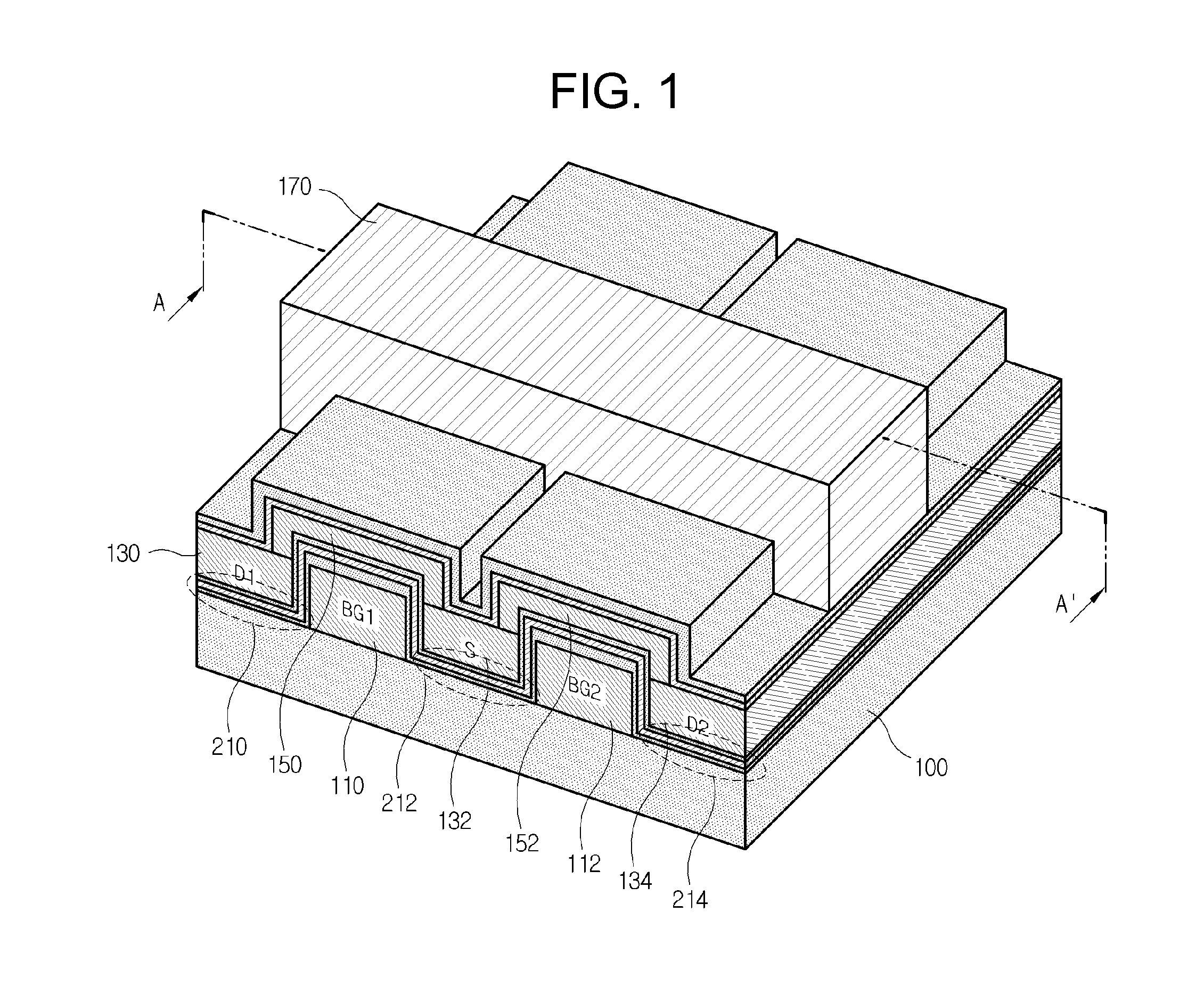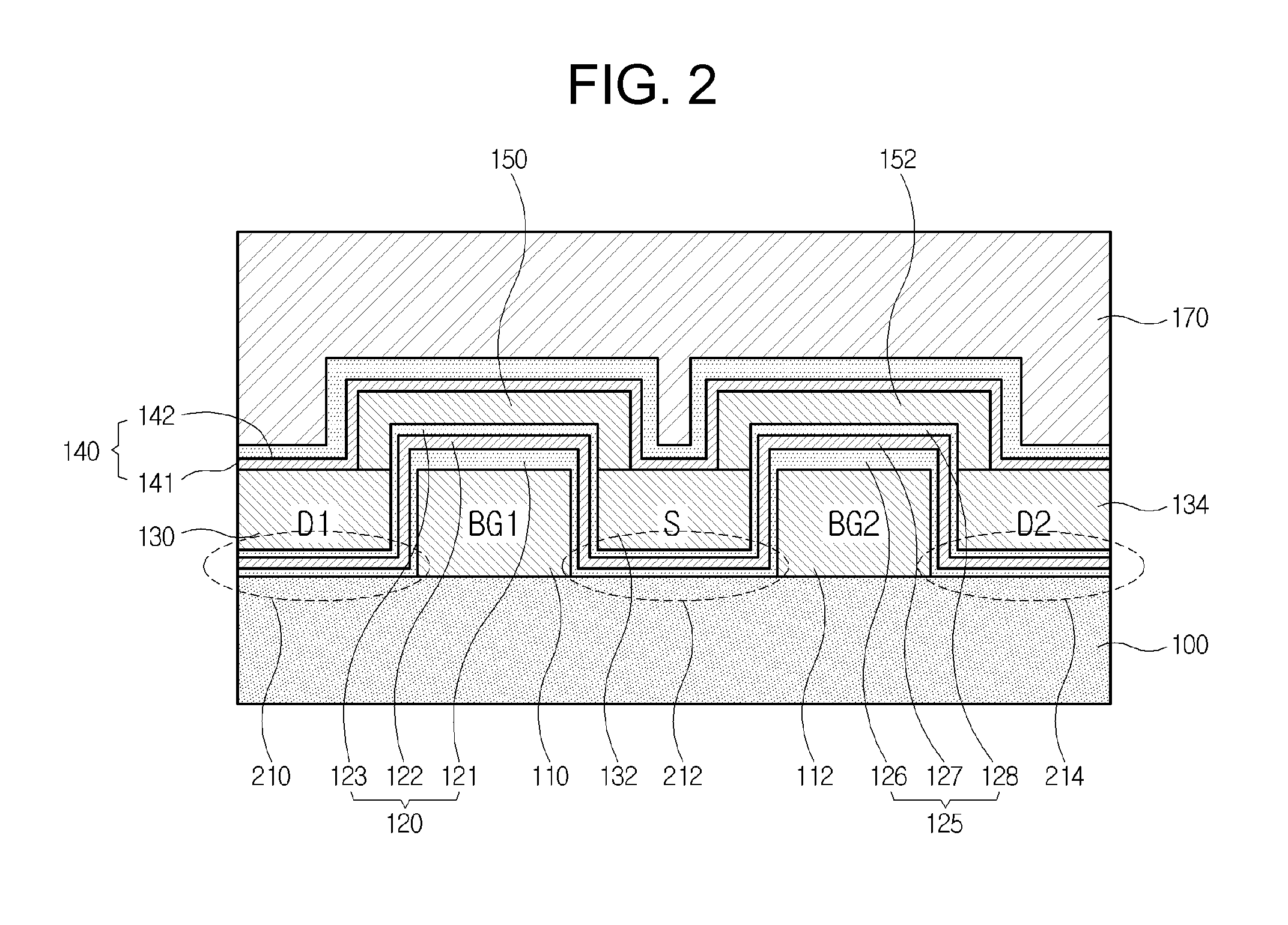Neuromorphic device with excitatory and inhibitory functionalities
a neuromorphic device and functional technology, applied in semiconductor devices, digital storage, instruments, etc., can solve the problems of large increase in power consumption, large increase in complexity of interconnection for excitatory or inhibitory functions, and high cost, so as to reduce the area of neuromorphic devices, reduce power consumption, and efficiently use
- Summary
- Abstract
- Description
- Claims
- Application Information
AI Technical Summary
Benefits of technology
Problems solved by technology
Method used
Image
Examples
first embodiment
[0049]FIG. 1 is a perspective diagram illustrating a neuromorphic device according to the present invention. FIG. 2 is a cross-sectional diagram taken along line A-A′ of FIG. 1.
[0050]Referring to FIGS. 1 to 2, the neuromorphic device 10 according to the embodiment is configured to include a substrate 100, first and second lower electrodes (BG1 and BG2) 110 and 112 which are formed on the substrate to be electrically isolated from each other, a first lower insulating film stack 120 which is formed on a top surface and sidewalls of the first lower electrode, a second lower insulating film stack 125 which is formed on a top surface and sidewalls of the second lower electrode, a first, second, and third doped regions 130, 132, and 134 which are formed at the left and right of the first and second lower electrode, first and second semiconductor regions 150 and 152 which are formed on the first and second lower insulating film stacks, an upper insulating film stack 140 which is formed on ...
second embodiment
[0066]FIG. 3 is a perspective diagram illustrating a neuromorphic device according to the present invention. FIG. 4 is a cross-sectional diagram taken along line B-B′ of FIG. 3.
[0067]Referring to FIGS. 3 and 4, the neuromorphic device according to the second embodiment has a structure similar to that of the neuromorphic device according to the first embodiment except that lower insulating film stacks are not formed between the first doped region and the substrate, between the second doped region and the substrate, and between the third doped region and the substrate. Therefore, the first doped region 130, the second doped region 132, and the third doped region 134 are formed directly on the substrate 100.
[0068]In the above-described neuromorphic devices according to the first and second embodiments, programming and erasing can be performed element by element by using the first and second lower electrodes and the upper electrode. In the neuromorphic device according to the present in...
PUM
 Login to View More
Login to View More Abstract
Description
Claims
Application Information
 Login to View More
Login to View More - R&D
- Intellectual Property
- Life Sciences
- Materials
- Tech Scout
- Unparalleled Data Quality
- Higher Quality Content
- 60% Fewer Hallucinations
Browse by: Latest US Patents, China's latest patents, Technical Efficacy Thesaurus, Application Domain, Technology Topic, Popular Technical Reports.
© 2025 PatSnap. All rights reserved.Legal|Privacy policy|Modern Slavery Act Transparency Statement|Sitemap|About US| Contact US: help@patsnap.com



